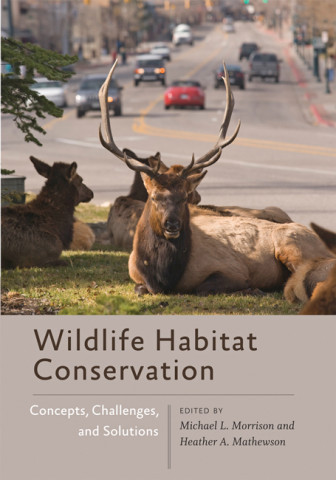
Reviews
This is primarily a book for students and working wildlife management professionals; however that is not to say that it is, or should be, outside the realm of consideration by those with a sincere interest in how wildlife researchers collect and interpret data. As so many aspects of contemporary wildlife conservation revolve around what the number are, how they were collected, and how they are interpreted, most anyone with a serious interest in wildlife conservation would do well to at least understand how the metaphorical sausage is made – even if they're not making it themselves. To that end, this is most certainly the book from which to best acquire such an understanding.
A book of this nature is long overdue, but this one was well worth the wait. Quantitative aspects of wildlife science have advanced considerably in recent decades and researchers and managers often struggle to keep up with increasingly complex quantitative concepts being utilized in wildlife science. With chapters written by leading experts, this book ameliorates that struggle by providing broad, understandable overviews of major quantitative tools and concepts used in wildlife science. This book will definitely be on my shelf.
Rapid advances in computing speed and increasing use of open-source software has provided wildlife biologists with unprecedented access to powerful analytical tools. This book will be an essential companion for all graduate students and researchers, becoming an indispensable guide to the most effective means of analyzing and interpreting their data.
Book Details
List of Contributors
Foreword, by R. J. Gutiérrez
Preface
Acknowledgments
1 Introduction
Leonard A. Brennan, Andrew N. Tri, and Bruce G. Marcot
PART I GENERAL STATISTICAL METHODS
2 Regression: Linear and
List of Contributors
Foreword, by R. J. Gutiérrez
Preface
Acknowledgments
1 Introduction
Leonard A. Brennan, Andrew N. Tri, and Bruce G. Marcot
PART I GENERAL STATISTICAL METHODS
2 Regression: Linear and Nonlinear, Parametricband Nonparametric
David B. Wester
3 Multivariate Models and Analyses
Erica F. Stuber, Christopher C. Chizinski, Jeffrey J. Lusk, and Joseph J. Fontaine
4 Comparing Ecological Models
Mevin B. Hooten and Evan G. Cooch
PART II ESTIMATION OF ABUNDANCE AND DEMOGRAPHIC PARAMETERS
5 Estimation of Population Parameters Using Marked Animals
Gary C. White
6 Distance Sampling
Stephen T. Buckland, David L. Miller, and Eric Rexstad
7 Occupancy Modeling Applications
Chris Sutherland and Daniel W. Linden
PART III DYNAMIC MODELING OF PROCESSES
8 Analysis of Population Monitoring Data
Jamie S. Sanderlin, Michael L. Morrison, and William M. Block
9 Systems Analysis and Simulation
Stephen J. Demaso and Joseph P. Sands
10 Applications of Individual-Based Models
Julie A. Heinrichs and Bruce G. Marcot
11 Detecting and Analyzing Density Dependence
Zachary S. Ladin and Christopher K. Williams
PART IV ANALYSIS OF SPATIALLY BASED DATA ON ANIMALS AND RESOURCES
12 Resource Selection Analysis
Julianna M. A. Jenkins, Damon B. Lesmeister, and Raymond J. Davis
13 Spatial Statistics in Wildlife Research
Andrew N. Tri
PART V NUMERICAL METHODS
14 Bayesian Analysis of Molecular Genetics Data
Damon L. Williford and Randy W. Deyoung
15 Machine Learning, Random Forests, and Boosted Regression Trees
Jane Elith
16 Causal Modeling and the Role of Expert Knowledge
Bruce G. Marcot
17 Summary and Synthesis: Looking to the Future
Andrew N. Tri, Bruce G. Marcot, and Leonard A. Brennan
Index





